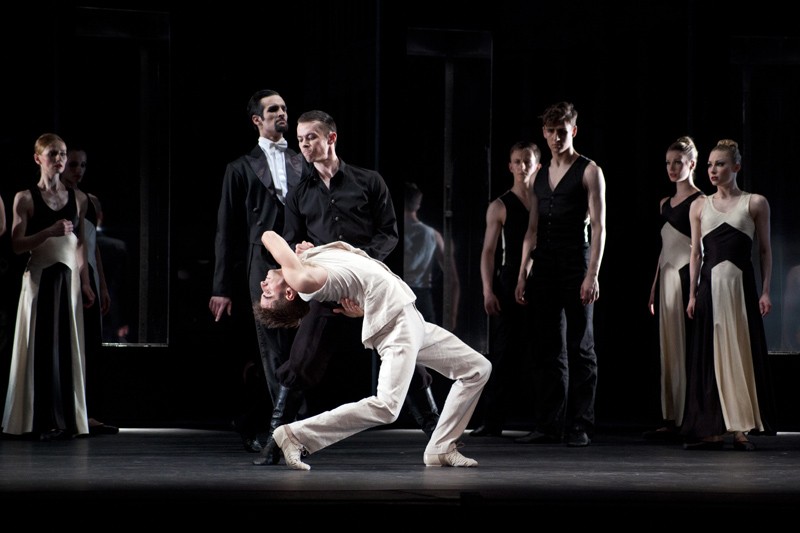Showing @ Festival Theatre, Edinburgh until Sat 24 May @ times vary
Why is Romeo & Juliet a timeless story? The ending remains as bleak and unwanted every time you watch it, from Luhrmann’s film, to Bernstein’s West Side Story or a classical production of the play. And still, it’s continually reproduced. The love story is accessible, it’s easy to buy in to the hope of a happy ending – even when tragedy is inevitable – but there’s a bigger point to it all.
Romeo and Juliet was choreographed for Scottish Ballet in 2008 by Polish choreographer Krzysztof Pastor and has been revived for another UK tour, securing its position as one of the company’s most triumphant pieces. When the two star-crossed lovers meet, the hatred between their disputing families swells with inevitably devastating consequences.
Prokofiev’s score is as poetic as Shakespeare’s verse: it’s romantic, daring, menacing and provocative. Performed live by the Scottish Ballet Orchestra, the Dance of the Knights is reclaimed as the powerful theme of the Montagues and Capulets at war, a far cry from Alan Sugar’s fanfare. The movement is delicate, subtle and sophisticated, the lighting is soft, the set minimal and it is altogether a visual masterpiece, beautiful to watch but detrimentally so. It’s a popular and accessible story but this production fails to evoke the overwhelming sense of loss that it should; it’s too short, too nice and it misses this: the tragedy isn’t that they die – the tragedy is that Romeo and Juliet exist in a world where their love is forbidden because of the uncompromising dispute between their families. The story is timeless because it reminds us again and again that war is futile, it compromises households, nations, and more intimately, the very things in the world that make us human.
